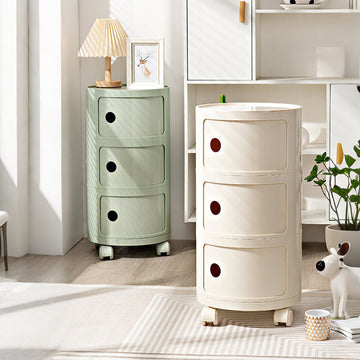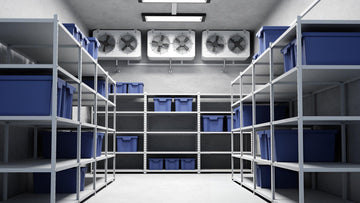Table of Contents
Ever noticed how your sofa ends up being the busiest spot in the house? It's where you crash after work, where guests land during gatherings, where pets sneak naps they're not supposed to take. Drinks spill. Remote controls vanish. Life happens there.
With all that action, it's no wonder couches wear out. But how long should one really last? Some push past ten years, easy. Others? Not so lucky—they start to sag, creak, or fade way sooner. Materials matter. So does how often you use it—and how you treat it.
If you're thinking about replacing your current one, like a modern sofa, or just want to stretch a bit more life out of it,, stick around. We'll get into what affects sofa lifespan, what to look for when buying, and some pretty solid ways to extend sofa life without spending a ton.
What Really Affects How Long a Sofa Lasts
Some couches go the distance. Others? Not so much. You might think it's all about looks, but what's underneath matters more than you'd guess. The frame, the fabric, the springs—plus a few things outside the sofa itself, like where you put it and how it's treated day to day—all of that adds up.
Ever had a sofa start sagging after two years while your friend's looks brand new after ten? It's not just luck. There are real reasons behind how long a sofa lasts, and we're about to break those down.
The Frame You Can't See (But Definitely Feel)
Let's start with the part that holds it all together—literally. If the frame's solid hardwood, like oak or maple, you're probably looking at a sofa that'll stick around for well over a decade. Those things don't budge easily.
But not all frames are built the same. The cheaper ones? Usually made from softwood or some kind of particleboard. They're light, sure—but they tend to give out faster. Think creaks, sags, maybe a broken leg after a few years. Metal frames can be tough too, but they're less common unless you're into industrial looks. And rust? That's another story.
The Stuff on the Outside (And How It Holds Up)
What your sofa's wrapped in matters more than people think. Leather—especially the full-grain kind—is tough to beat. It ages well, wipes clean, and if you give it a little love now and then, it'll look better with time.
Microfiber and other synthetic blends are no slouch either. They're made for spills and chaos. Useful if you've got kids, dogs, or both. Natural fabrics like cotton or linen feel nice, but they're a bit needy. They fade, they stain, and they don't forgive accidents. If you go that route, maybe invest in a throw or two.
Springs and Cushions: The Hidden Comfort Game
You might not see them, but springs make a big difference. The fancy ones—eight-way hand-tied—are built to last and feel solid for years. They're rare, though, and usually come with a higher price tag. Sinuous springs (those wavy ones) are what you'll find in most stores. Decent, reliable, mid-tier.
Cushions? Foam keeps its shape longer. Down feels amazing… until it starts going flat. A combo of both is what many brands go for. Just don't forget to flip them once in a while.
Life Happens—And It Shows on Your Couch
Sunlight is sneaky. It fades fabric slowly until one day you wonder why the left side looks paler than the right. Humidity? Even worse. It can mess with wood, and worse—cause mildew inside the cushions.
And then there's daily use. A sofa in a formal sitting room might last fifteen years. One in a kid-heavy, snack-friendly family room? Maybe half that. Pets, toddlers, sleepovers—they all leave their mark.
A Little Maintenance Goes a Long Way
Vacuum crumbs. Wipe up spills. Flip cushions. Simple stuff, but most people forget until the damage shows. Leather needs conditioning—nothing fancy, just a wipe and some cream every few months.
Fix the squeak before it gets louder. Tighten screws. Patch small tears. It's like shoes: take care of them, and they'll carry you longer.

How Long Do These Sofas Really Last?
No two couches are the same—not when you sit on them, and definitely not when it comes to how long they stick around. Some can take a beating for over a decade. Others? Not so much. Let's take a look at a few common types and what you can reasonably expect from each.
🛋️ Leather Sofas
If you've ever had a real leather sofa—especially one made from full-grain hide—you know it's built like a tank. With decent care (a wipe-down now and then, plus some conditioner), it could last 15, maybe even 20 years. These things are tough. The catch? They can dry out if you keep them near a sunny window or blasting heat vents.
🧵 Fabric Sofas
Fabric couches are all over the map. A tightly woven synthetic blend might hold up for 10–12 years easy. But go with something like cotton or linen, and you might start seeing wear (or weird stains) after 5 or 6. If your sofa's in a high-traffic spot—kids, pets, Netflix marathons—expect the clock to tick faster.
🧩 Modular Sofas
Here's the upside of modular designs: when something breaks, you don't need to toss the whole thing. Just swap the piece. That alone gives these sofas a bit of an edge. Lifespan? Often 10 to 15 years, depending on the build. The more solid the connectors and base, the longer it holds together.
✨ Velvet Sofas
Velvet's stunning—until it isn't. It bruises, fades, and soaks up spills like a sponge. Depending on the fiber type and how much use it gets, you might get 7 to 10 years out of it. Maybe more if you baby it. Maybe less if it ends up being the cat's favorite nap zone.
🔄 Recliner Sofas
Recliners are complicated. More moving parts = more chances for something to jam or snap. That said, a well-made recliner with sturdy mechanics can hold out for a solid 10–15 years. Just don't ignore those creaks—they're usually early warnings.
💸 Budget Sofas
Let's be honest: if you paid next to nothing, don't expect miracles. Cheap particleboard, low-density foam, thin fabric—these usually last 3 to 5 years, tops. That's not to say they're useless. They're great for short-term setups, guest rooms, or rental apartments. Just not forever furniture.
💼 High-End Sofas
The heavyweights. Hardwood frames, hand-tied springs, premium fabric or leather. These are the kinds of sofas that stay in the family. With proper care, 15 to 20 years isn't a stretch. Some even outlive their owners. No kidding.

Practical Tips to Make Your Sofa Last Longer
Knowing how long a sofa should last is useful—but let's be honest, that's not always how it plays out. Some hold up for years. Others? Not even close. And a lot of that comes down to what happens after it lands in your living room.
The good part? You don't need to baby it or spend a fortune. Just a few habits—nothing fancy—can keep it looking and feeling solid for way longer than expected.
🧽 Vacuuming Sounds Boring, But It Works
There's nothing sexy about dragging out the vacuum, but dust builds up fast—like, faster than you think. Crumbs, pet hair, mystery fuzz—it all ends up in the cushions. Weekly-ish is good enough. Leather? Wipe it down gently, and don't go wild with cleaning products. A little conditioner here and there does the trick.
🔄 Don't Just Sit—Flip Stuff
We all have that one spot, right? The corner seat, the blanket throne. But if you always sit in the same spot, your sofa remembers. And not in a good way. Flip the cushions sometimes. Rotate them. It's weirdly satisfying and helps things wear out more evenly.
☀️ Sunlight: Beautiful and Also Kind of a Sofa Killer
That golden glow coming through the window? Yeah, it's slowly bleaching your couch. Especially lighter fabrics. Leather dries up too if it's sunbathing 24/7. If you can shift your sofa just a little... or hang a curtain... totally worth it.
🔧 Little Problems Get Loud Later
One leg slightly off? A small rip on the corner? Ignore it long enough and suddenly you've got a couch that tilts like a boat. Fix small stuff early—it's cheaper, quicker, and keeps your sofa alive longer than you'd expect.
🐶 Pets, Kids, Chaos—Protect Before It's Too Late
You can't train your dog to respect upholstery. Toddlers? Forget it. Toss a throw blanket over the danger zones. Bonus: it's washable. You'll thank yourself the next time someone spills juice or walks on the sofa in muddy socks (yep, it happens).
🔩 That Frame? It Matters More Than You Think
The frame's like the bones of the thing. If they go soft, everything else collapses. A creak here, a wobble there—don't wait. Grab a screwdriver. Tighten some stuff. You don't need to be a carpenter to extend the life of your couch.
🧠 Before You Toss It—Ask If It's Really Done
A saggy cushion doesn't mean death. Sometimes all it needs is fresh filling or new covers. If the frame's still solid, it might be worth saving. Honestly, some of the best sofas are the ones that get brought back from the edge.

Sofa Lifespan Myths That Just Won't Die
People talk a lot about how long a sofa should last—but not all of it holds up. Some advice sounds smart until your cushions are flat and your back hurts. Let's clear up a few things people get wrong all the time.
❌ Myth #1: "Expensive = Built to Last Forever"
Price helps, sure. But it's not a guarantee. Some high-end sofas look amazing but fall apart faster than a budget one with a solid frame. What matters more? Materials, construction, and how you treat it once it's home.
❌ Myth #2: "Once It Sags, It's Done"
A droopy cushion doesn't mean your couch is finished. Foam can be replaced. Springs can be adjusted. If the frame's still solid, the rest is fixable. Don't toss a good sofa just because it's looking tired.
❌ Myth #3: "Leather Lasts No Matter What"
Real leather can last a long time, but only if you treat it right. Sunlight, dryness, and neglect will wreck it. We've seen cracked armrests and peeling seats on pricey leather couches that were barely five years old.
❌ Myth #4: "Cleaning Often = Better"
Overcleaning can actually wear things down faster—especially delicate fabrics. A good vacuum once a week is smart. But daily scrubbing? Not so much. And always test cleaners on a hidden spot first.
❌ Myth #5: "All Sofas Age the Same"
Nope. A velvet loveseat in a quiet guest room will age very differently from a family-room sectional that sees popcorn spills and dog naps every day. How long your sofa lasts depends way more on how it's used than just what it's made of.
✅ Takeaway Sentence
A little common sense goes a long way. Don't believe everything you hear—especially when it comes to couches. The truth? Most sofas have more life in them than we give them credit for.
Conclusion
Let's be real—no sofa lasts forever. But the difference between a couch that gives out in five years and one that's still comfy after fifteen? That's mostly on us.
What you buy matters, of course. A solid frame, decent springs, and the right fabric go a long way. But how you treat your sofa day to day—where you put it, how you clean it, whether you rotate the cushions or just let them cave in—that's what really decides how long it sticks around.
So if you're in the market for a new one, think beyond the color swatch. Look at the build, the materials, and whether it'll hold up to your real life (pets, kids, popcorn nights included). And if you've already got a good one? Even better. With a little care, it'll probably last longer than you expect.







